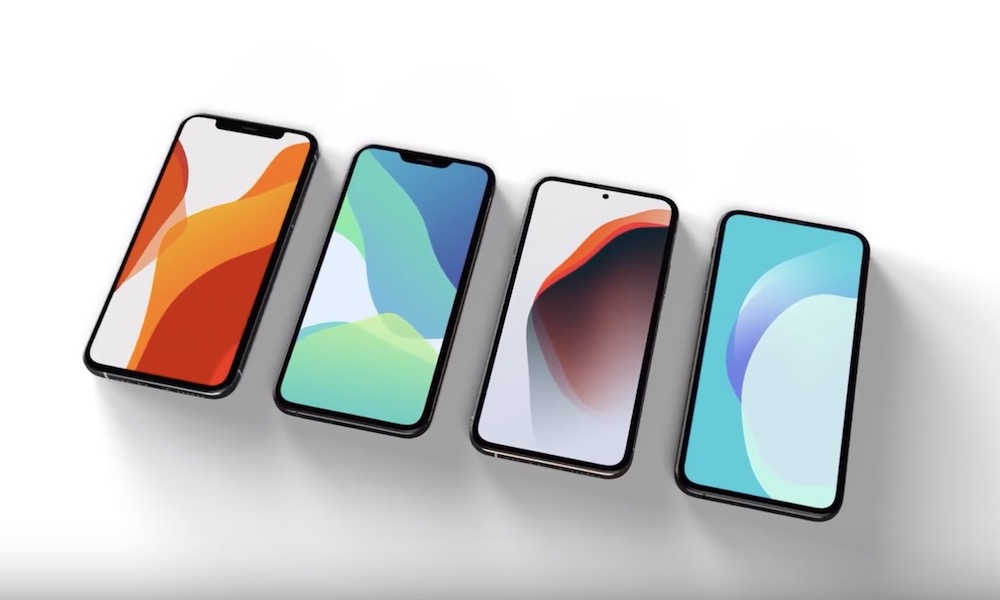Apple’s 2020 iPhone Pro Models Will Get Even Better OLED Displays
 Credit: EverythingApplePro
Credit: EverythingAppleProToggle Dark Mode
Next year’s iPhone lineup is starting to come more into focus, with a new report suggesting that Apple will be making a big improvement on the OLED technology that it’s been using in its higher-end iPhone models since the 2017 iPhone X.
It’s no big surprise at this point that Apple is expected to go all-in on OLED next year, replacing the Liquid Retina display from the “non-pro” iPhone XR and iPhone 11 models with an OLED in next year’s successor, however it now appears that the “iPhone 12 Pro” models will still be differentiated from the standard model by having even better OLED displays.
According to a new report by Korea’s ETNews, Apple is expected to adopt a new Samsung technology called Y-OCTA that could not only result in an even thinner display but also reduce the cost of producing the traditionally more expensive OLED screens.
Samsung’s new Y-OCTA technology allows touchscreen sensors to be integrated directly into the top surface of the OLED panel, known as “on-cell touch,” rather than placing a separate layer of touch film on top. This shaves around a millimetre off the display thickness, while also lowering production costs since there’s no need to manufacture, apply, and calibrate a separate touchscreen film layer.
The report notes that Samsung Display would supply these new Y-OCTA displays, as they’re currently the only company that is capable of mass-producing the panels right now. According to the report, Samsung has been actively promoting the Y-OCTA technology at Apple, and apparently even offered”shocking” terms to convince them to make the switch.
However, it looks like the new Y-OCTA displays will be limited to Apple’s Pro models, the “iPhone 12 Pro” and “iPhone 12 Pro Max,” which are expected to arrive in 5.4-inch and 6.7-inch sizes, representing another significant design change from the standard 5.8-inch and 6.5-inch iPhones that we’ve been seeing for the past few years. Meanwhile, the 6.1-inch “iPhone 12” is not only expected to retain a similar design to the current iPhone 11, but will also continue to use the same style of OLED display currently found on the iPhone 11 Pro, albeit in a 6.1-inch size. Both Samsung Display and LG are expected to continue supplying these panels next year.
Despite the ability for the new Y-OCTA panels to be thinner, it’s not clear whether this will actually result in a reduction in the thickness of next year’s iPhones. Apple has actually moved away from its obsession with thinness over the past year, with the iPhone 11 Pro and iPhone 11 Pro Max actually gaining a bit over last year’s XS models, despite the elimination of the 3D Touch layer. Apple also abandoned its beleaguered butterfly keyboards this fall, resulting in its new 16-inch MacBook Pro slightly increasing in thickness as well.
So Apple could simply take advantage of the thinner display to add other features, as it did by increasing the battery size in this year’s iPhones. The overall design of the “iPhone 12” may also have a bearing on this, with Apple expected to adopt a squarish design with a metal edge that’s reminiscent of the classic iPhone 4.
Among other things, all of next year’s iPhones are expected to sport fast 5G wireless technology, along with a laser-based rear-facing 3D “time-of-flight” sensor, so there’s going to be a lot of new technology that Apple is trying to pack into these iPhones, and it’s safe to say that every millimetre is going to count.
[The information provided in this article has NOT been confirmed by Apple and may be speculation. Provided details may not be factual. Take all rumors, tech or otherwise, with a grain of salt.]






